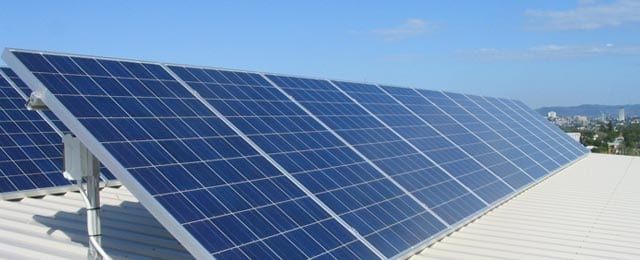
The Tasmanian Economic Regulator’s draft report on the solar feed-in tariff demonstrates a remarkable ability to ignore the challenge of energy security in Tasmania, the changes facing the electricity industry nationally, and the global climate emergency.
State Energy Minister Matthew Groom has vowed to “consider all options to reduce the chances of an energy crisis” including “greater incentives for solar”, but the message doesn’t seem to have got through to the regulator.
The 59-page draft report ends up proposing exactly the same formula for calculating the feed-in tariff (FiT) rate as it did three years ago. As a result it suggests that the (ex GST) FiT rate is likely to increase slightly from 5.5c to 6.5c purely as a result of higher wholesale energy prices.
The Tasmania Renewable Energy Association provided a submission to the regulator outlining nine additional benefits of solar PV which should be taken into account in setting the FiT, however the regulator has dismissed or ignored all of these.
The report acknowledges that solar PV can increase energy security when dams are low, but because solar PV supplied only 1 per cent of Tasmanian electricity demand in 2014-15 and there is no current mechanism for rewarding this benefit the report suggests it can be excluded from the FiT calculation.
This is a self-defeating cycle. Solar PV could meet much more of Tasmania’s energy needs, but until the full benefit is recognised, there will be no incentive for solar owners to invest in feeding energy into the grid.
Tasmania is currently burning gas and will start importing brown coal fired power as soon as Basslink is fixed. Yet the draft report does not acknowledge any environmental benefit in increasing the use of solar energy in Tasmania.
The report is meant to determine the feed-in tariff for the next three years but says it is “too early to comment on the potential impact of embedded battery technology”.
But within three years, the deployment of household batteries will be widespread. We need to be planning now for how consumers installing home batteries can be encouraged to contribute to a more cost effective and robust network. A wait-and-see approach is a sure fire way to miss the opportunities battery storage provides.
Surplus energy from household PV is used locally and makes no use of the transmission network. The regulator acknowledges that “conceptually, transmission costs can be avoided through the purchase of excess electricity generated by solar PV”.
The regulator consulted TasNetworks who confirmed that retailers are charged for transmission costs for all electricity sold, even if some of the electricity does not in fact travel through the transmission network.
The regulator should be finding a mechanism to share the benefit of cheaper, locally generated power between customers and the solar owners who provide this energy. Instead they are propping up the old centralised model even if it means all customers are paying for a service that was not in fact used.
Comment on the draft report is due by 15 March.
Jack Gilding is executive officer of the Tasmanian Renewable Energy Alliance.








